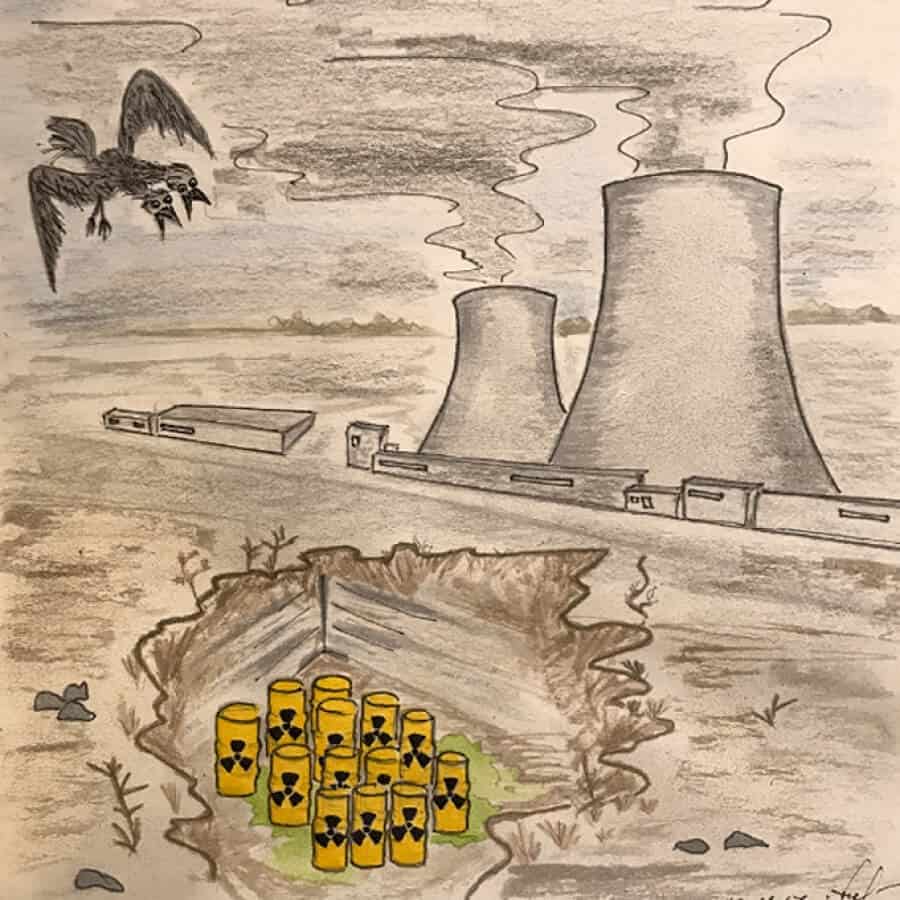The energy of the atom – does it have a place in the future of mankind? As the recently concluded COP23 climate negotiations in Bonn have shown, opinions on this issue continue to differ significantly.
For example, representatives from the Russian “Rosatom” agency promoted nuclear power as the most “attractive as a carbonless and affordable source of energy” – primarily for the purposes of conforming to the Paris Agreement. A similar position was taken by the US delegation: despite the negative attitude of Donald Trump about “green” initiatives, the US representatives spoke in favor of nuclear and even “clean” coal energy as a solution to the climate problem. These speeches, however, caused resentment and several protest actions, including those by environmentalists from South Africa and India, the Kommersant newspaper reported.
One of the main arguments put forward against the use of atomic energy and in favor of reducing the number of nuclear power plants in the world is the use of renewable energy sources. There is water, wind, and sun all around us, green activists from Greenpeace and Friends of the Earth are shouting, why should we face the risk of an atomic explosion and the consequences, as we saw in the plot of the Hollywood blockbuster. After the tragedies at Chernobyl and at Fukushima, these statements find active support from the general public.
However, there is a problem: renewable sources of energy would have to expand to “hardly believable” dimensions to compete with atomic/nuclear to combat climate change, said David Shropshire, Head of the International Atomic Energy Agency (IAEA) Planning and Economic Studies Division. He expressed his views in a presentation for the annual Climate Change and Nuclear Energy report.
The world, according to him, needs to use what works now instead of investing a huge amount of money into new renewable energy infrastructure or “extreme” energy efficiency. Nuclear power can be an asset to the industry by delivering electricity reliably, steadily, and at predictable prices.
The reports noted that without nuclear power plants, humanity would have had to dispose of more than 65 gigatonnes of CO2 above the level of 1970, which would have been a major barrier to the search for a “climate” solution.
David Shropshire’s opinion is shared by other experts, such as Barry Brook, professor of ecology at Tasmanian University, and Professor Corey Bradshaw of the University of Adelaide. Back in 2014, they published an open letter to environmental activists calling for a new look at the situation, not from an idealistic, but from a rational point of view, and accepting the fact that nuclear energy is on the list of energy sources that not only contribute little to climate warming, but also help to preserve biodiversity on the planet. Abandoning the peaceful atom and actively using fossil energy sources, on the other hand, mean increasing emissions and, correspondingly, increasing the level of environmental pollution. It’s not just about the “carbon footprint,” but also about heavy metals.
At this point, ecologists are again entering the discussion, citing the issue of nuclear waste storage as an argument. And that, really, is something to talk about.
Radioactive waste includes any material that has radioactive properties, and can not be used further.
Based on its degree of radioactivity, waste is divided into waste of low, medium, and high activity. The first group includes remains of slightly contaminated materials, the second one covers more contaminated materials with a large content of radioactive substances. The third group consists of used nuclear fuel or waste after its processing, which by the way retain radioactive properties for hundreds of years. Special places must be provided to store such waste.
Speaking of Europe, the Finns have become the first to receive permission to build a deep storage facility for nuclear waste. It will be located near the Olkiluoto nuclear power plant and will go into operation in 2020.
In the Czech Republic, the responsibility for storing and processing nuclear waste rests with the Management of radioactive waste storage facilities. These activities are carried out in accordance with the so-called atomic law No 263/2016 Sb. and the Decree of the State Administration for Nuclear Safety No 377/2016 Sb. Currently, three temporary storage facilities for radioactive waste are operating in the Republic (Dukovany, Richard, and Bratrství). After 2065, the Czech government plans to put another storage facility into operation, at great depth. Research and preparation for the project is currently underway.
It is interesting to note that about 450 tons of low- and medium-active nuclear waste are produced annually in the Czech Republic, and only 100 tons of this amount are accounted for by the nuclear power plants at Temelin and Dukovany, writes the portal Vítejte na Zemi. The rest is health care waste (from radiological examinations, for example), industrial production, and scientific research.
It turns out that nuclear power plants, despite their formidable appearance, are much less significant sources of pollution than we think.
The thing is, while prominent ecologists are focused on the problem of storing nuclear waste, an equally important question escapes from their field of view: how to remove nuclear reactors once they become obsolete. This is also a very long process. Complete deconstruction can last more than 15 years, experts from the Czech Nuclear Society believe. And, finally, there is the issue of emergency safety at existing installations. Here, unfortunately, you can blame mostly the human factor. Given competent treatment and the strict observance of all instructions, the atom can, indeed, be peaceful.
And what do you think about it?
Support us!
All your donations will be used to pay the magazine’s journalists and to support the ongoing costs of maintaining the site.
Share this post
Interested in co-operating with us?
We are open to co-operation from writers and businesses alike. You can reach us on our email at cooperations@youthtimemag.com/magazine@youthtimemag.com and we will get back to you as quick as we can.









